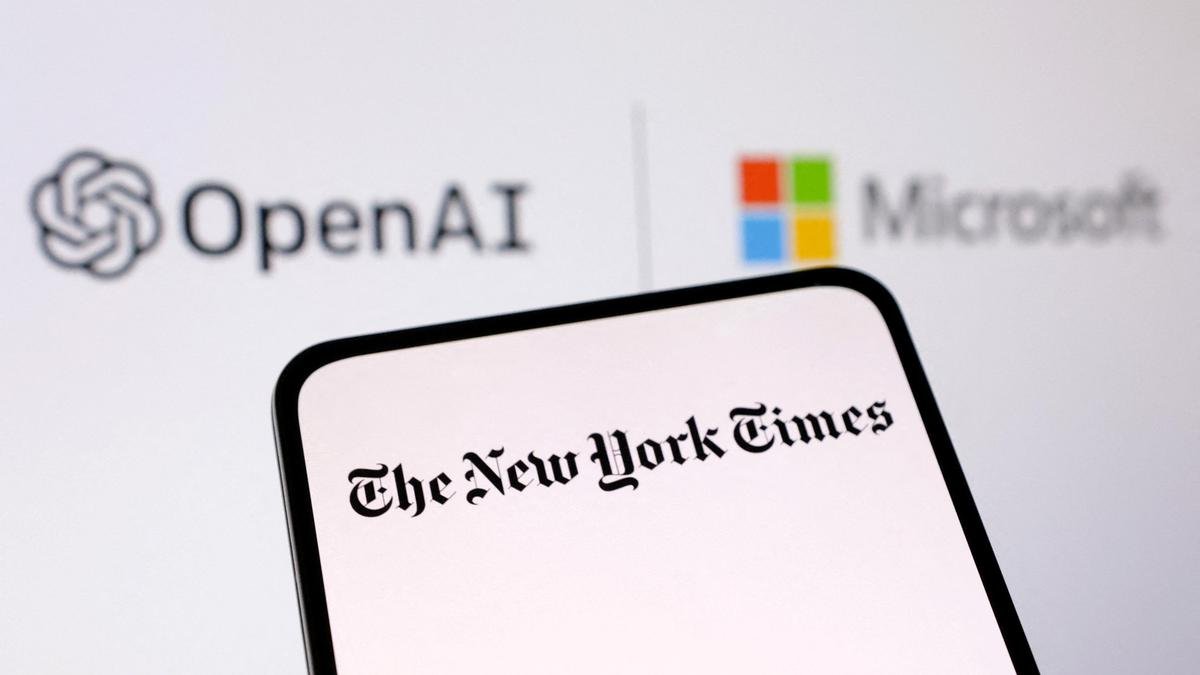In an unprecedented move that has sent ripples across the technology and media landscapes, The New York Times has initiated legal action against Microsoft and OpenAI, the minds behind the revolutionary ChatGPT. This lawsuit, grounded in copyright infringement claims, underscores a growing contention between traditional media houses and the burgeoning sector of artificial intelligence.
Key Highlights:
- The lawsuit alleges unlawful use of The New York Times‘ copyrighted articles to train AI models like GPT-4, causing potential “billions of dollars” in damages.
- The New York Times accuses Microsoft and OpenAI of leveraging its journalism to enhance their AI products without compensation.
- The media giant seeks the destruction of AI models trained with its content, highlighting the significant investment in its investigative journalism.
- This legal action follows failed negotiations aimed at finding a fair resolution that respects copyright while advancing AI technology responsibly.

The Essence of the Lawsuit
The heart of this legal battle lies in the accusation that Microsoft and OpenAI used extensive portions of The New York Times’ content, including a Pulitzer-Prize-winning investigation, to train their AI models without authorization. This alleged infringement not only challenges the copyright of the published works but also the ethical boundaries of AI development. The lawsuit reflects a broader concern over AI’s capability to mimic and disseminate copyrighted material, thereby directly competing with the original publishers.
Microsoft and OpenAI’s Growing Legal Challenges
This lawsuit is part of a larger narrative of increasing legal scrutiny faced by AI developers over copyright infringement. Notably, more than 4,000 writers have previously accused OpenAI and others of exploitative practices, and high-profile cases against companies like Getty Images and Meta have set a precedent for such legal confrontations. These developments highlight the escalating tension between copyright holders and AI developers, underscoring the complex interplay of innovation, copyright law, and ethical considerations in the AI era.
The Broader Implications
The outcome of this lawsuit could have far-reaching consequences for the AI industry and the media landscape. It raises crucial questions about the balance between fostering technological advancement and protecting intellectual property rights. The New York Times’ bold move could potentially reshape the future of AI, setting new legal and ethical standards for using copyrighted material to train AI models.
A Concluding Perspective
The legal battle between The New York Times, Microsoft, and OpenAI encapsulates the growing tensions at the intersection of AI development and copyright law. It not only challenges existing norms but also sets the stage for a broader discussion on the ethical use of copyrighted material in the digital age. As the lawsuit unfolds, it will undoubtedly influence future policies and practices surrounding AI technology, possibly paving the way for more equitable collaborations between technology companies and content creators.
This case serves as a pivotal moment, highlighting the need for a balanced approach that nurtures innovation while respecting the value and rights of original content creators. As we navigate this complex terrain, the outcome of this lawsuit may very well define the contours of the relationship between AI and copyright in the years to come.


















